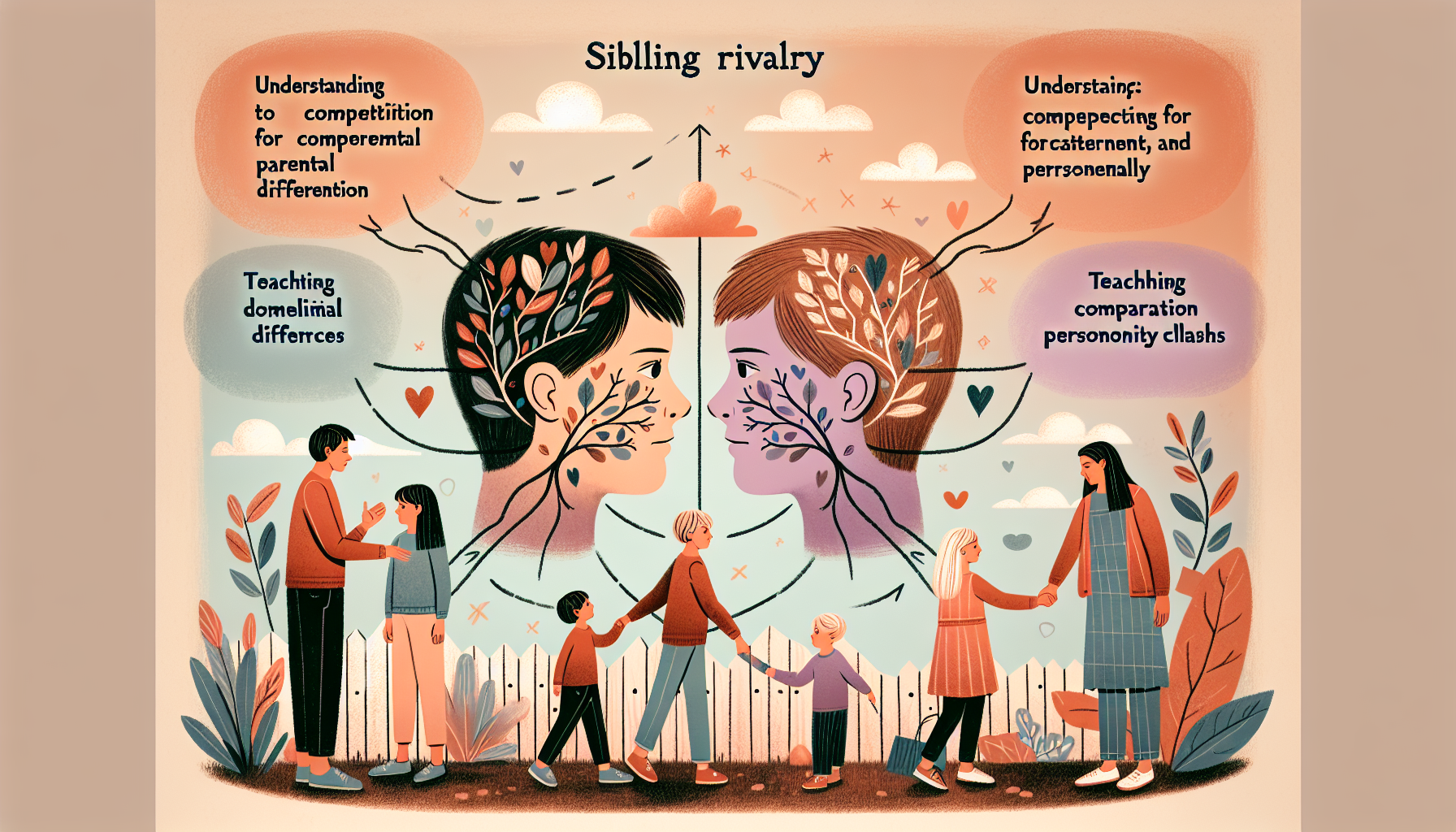“`html
Managing Sibling Rivalry Effectively
Siblings are often our first friends and sometimes our first rivals. While it’s completely natural for brothers and sisters to have conflicts, excessive sibling rivalry can create stress and disharmony within a family. As parents, learning how to manage sibling rivalry effectively is crucial for fostering a peaceful, loving household where every child feels valued and heard.
Why Sibling Rivalry Happens
Sibling rivalry is a common phenomenon that arises in nearly all families. It stems from a variety of factors, including differences in personality, competition for parental attention, and developmental stages. Understanding the root causes of sibling rivalry can help parents address it more effectively.
Developmental Factors
Children at different stages of development have varying needs and abilities, which can sometimes lead to misunderstandings or jealousy. For example, a toddler might struggle to share toys with an older sibling, while a teenager might feel burdened by responsibilities that their younger sibling doesn’t have.
Competition for Parental Attention
One of the most significant triggers of sibling rivalry is the perception that one child is favored over another. Children crave their parents’ love and attention, and even small differences in treatment—whether real or perceived—can lead to feelings of resentment.
Individual Temperaments
Each child has a unique temperament, which can influence how they interact with their siblings. For instance, a more introverted child may feel overwhelmed by a sibling who is highly extroverted and energetic. These personality clashes can sometimes lead to conflicts.
The Psychological Impact of Sibling Rivalry
While some level of rivalry is normal and even healthy, chronic and unresolved conflicts can have long-lasting psychological effects. Children who frequently experience sibling rivalry may struggle with self-esteem, feel unsafe expressing their emotions, or have difficulty building healthy relationships later in life.
Cognitive-behavioral therapy (CBT) principles suggest that children need a sense of safety, autonomy, and validation to thrive. When sibling rivalry becomes toxic, it can undermine these foundational psychological needs. For example:
- Safety: Constant fighting can make a child feel emotionally insecure at home.
- Autonomy: Being compared to a sibling can make a child feel like their individuality is not valued.
- Self-expression: A child may suppress their feelings to avoid conflict, which can hinder emotional development.
Practical Tips for Managing Sibling Rivalry
Fortunately, there are effective strategies parents can use to handle conflicts and foster positive family dynamics. Here are some practical tips to help you manage sibling rivalry in your household:
1. Set Clear Boundaries
Establish family rules that promote respect and kindness. For example:
- No name-calling or hurtful language.
- Take turns with shared items, like toys or electronics.
- Apologize and make amends after conflicts.
Consistency is key. Make sure all family members follow these rules, and enforce them calmly but firmly when necessary.
2. Avoid Comparisons
Comparing siblings can fuel resentment and competition. Instead of saying, “Why can’t you be more like your brother?” focus on each child’s unique strengths. For example, say, “I love how creative you are!” or “You worked so hard on that project—great job!”
3. Spend Quality Time with Each Child
One-on-one time with each child can help them feel valued and reduce rivalry. Whether it’s reading a book together, going for a walk, or simply talking about their day, these moments reinforce their sense of security and importance.
4. Teach Conflict Resolution Skills
Help your children learn how to resolve conflicts constructively. This includes:
- Encouraging them to express their feelings using “I” statements (e.g., “I feel upset when you take my things without asking”).
- Teaching them to listen to each other’s perspectives.
- Brainstorming solutions together and agreeing on compromises.
5. Model Positive Behavior
Children often imitate their parents’ behavior. If you handle conflicts calmly and respectfully, your children are more likely to do the same. Show them how to apologize, forgive, and move forward after disagreements.
6. Recognize and Celebrate Cooperation
When your children work together or show kindness to each other, acknowledge it! Positive reinforcement can encourage more cooperative behavior. For example, say, “I noticed how well you two shared your toys today—I’m so proud of you!”
7. Know When to Step In
While it’s important to let your children resolve minor disputes on their own, there are times when parental intervention is necessary—especially if the conflict turns physical or emotionally harmful. In these cases:
- Separate the children to cool off.
- Talk to each child individually to understand their perspective.
- Help them work toward a resolution without assigning blame.
Building Stronger Family Dynamics
Managing sibling rivalry effectively isn’t just about resolving conflicts—it’s about creating a family environment where every child feels valued, respected, and loved. Here are some additional strategies to strengthen your family dynamics:
1. Foster a Team Mentality
Encourage your children to see themselves as part of a team. Use phrases like, “We’re all in this together,” and plan family activities that require teamwork, such as cooking a meal or playing a cooperative game.
2. Promote Individuality
Celebrate each child’s unique interests and talents. This reduces the need to compete for attention and helps each child feel confident in their own identity.
3. Create Family Traditions
Shared traditions—like weekly movie nights or holiday rituals—can strengthen family bonds and create positive memories that overshadow conflicts.
Conclusion
Sibling rivalry is a natural part of family life, but it doesn’t have to disrupt your household. By understanding its root causes, addressing your children’s psychological needs, and implementing practical strategies, you can help your kids build stronger, healthier relationships with each other.
Remember, your role as a parent isn’t to eliminate sibling rivalry entirely—it’s to guide your children toward resolving conflicts constructively and fostering a home environment where love and respect thrive. With patience, consistency, and a little creativity, you can turn sibling rivalry into an opportunity for growth and connection within your family.
For more parenting tips and insights, explore other helpful resources on Child Mind.
“`

